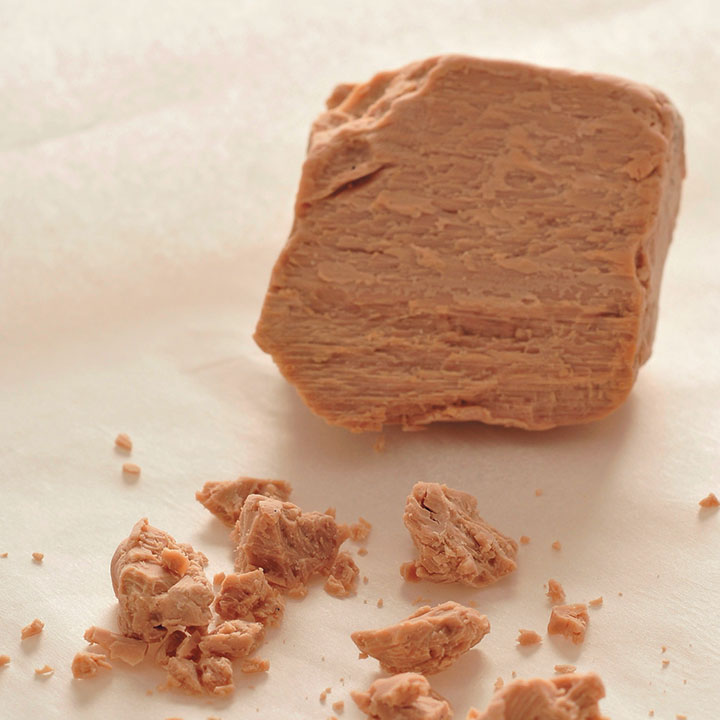Yeasts are naturally-occurring microorganisms that create delicious flavour and a soft, airy structure in bakes by generating carbon dioxide gas from sugars. With so many different types of yeast available, it can be confusing to know which is which. This is our ultimate guide to help you pick the best type of yeast for your bakes.
Active Dry
Active dry yeast is an old-school form of dehydrated yeast known to be unstable and somewhat unreliable. For that reason, this type of yeast isn’t used much anymore and may not even be available in grocery stores. Active dry yeast has to be proofed in warm water for 10-20 mins before using to test whether it’s still active. For any recipes that call for active dry yeast, we recommend using 75% of the amount of Instant yeast (see below) instead (e.g. 1 tsp active dry yeast = ¾ tsp instant yeast).
Instant
With a stable shelf life and consistent level of activity, Instant yeast was created to solve the downfalls of Active Dry yeast. Instant yeast comes in 10g (1 Tbsp) sachets and is the most popular form of yeast in stores. A bonus is that it can be added straight to dry ingredients without proofing in water first, although this step can still be done if you like. Almost all recipes nowadays use Instant yeast.
RapidRise
RapidRise yeast is a form of fast-working Instant yeast. This form of yeast is great when you’re pressed for time, although it won’t give as much flavour to your dough.
Fresh
Also known as cake yeast or compressed yeast, this is the only form of yeast that isn’t dehydrated. It comes in blocks that resemble modelling clay with a rubbery texture and can be bought from the bakery section of large supermarkets. This form of yeast is the least shelf stable – it has to be kept in the fridge and will only last about 2 weeks. It is mostly used for commercial purposes because of its fast and potent rise. To test how fresh your yeast is, pinch off a piece from your block. Very fresh yeast should ‘snap’ while older yeast will become gummy. Dissolve fresh yeast in warm liquid first to make sure it is evenly distributed in your mixture. To replace fresh yeast with instant, use one-third of the weight.
Sourdough
Sourdough is leavened using the wild yeast already present in flour. This kind of yeast takes a while to activate and needs more time and attention compared to commercial types of yeast. Read more about making your own sourdough starter here.
Try out some recipes!
Nutella-filled brioche doughnuts
https://www.foodandhome.co.za/recipes/swedish-cardamom-sweet-knotted-buns


